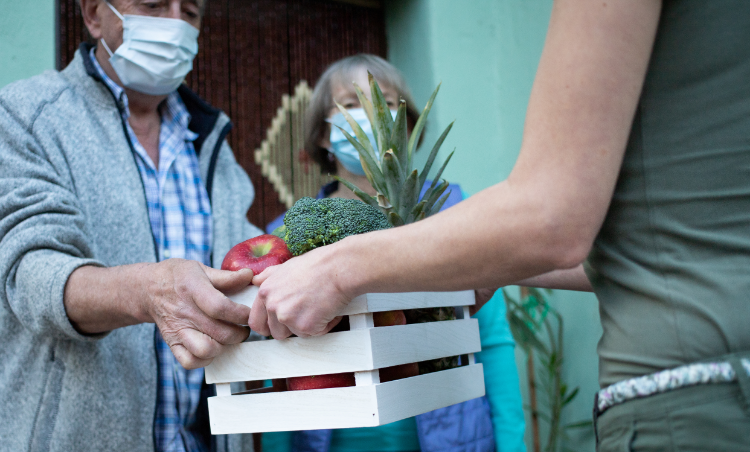Personal Protective Equipment: Pandemic Safety for Seniors
Personal protective equipment (PPE) is a hot topic everywhere these days. There’s a lot of misinformation out there about what to wear, what it does, and how to use it safely.
If you’re confused about PPE and how to use it in your daily life, this blog post is for you. Use it as a quick guide to understanding the different kinds of PPE, what they’re for, who should use them, and how.

What to Know About Cloth Masks
The CDC recommends cloth masks for non-health care providers. Cloth masks should contain at least two layers of a tightly woven, breathable material such as quilting cotton or heavy-duty jersey. These masks help block the flow of germs out of your mouth and nose to protect others around you from getting sick. Remember to wash a cloth mask after every use to avoid contamination.
Recommended for: Everyday wear to protect others around you
Not recommended for: Preventing infection if you are near other people who are not wearing a mask
What to Know About Surgical Masks
A surgical mask is a disposable paperlike mask designed to be discarded after a single use. You can recognize surgical masks as the kind you most often see at a doctor or dentist appointment. These masks help block the flow of germs out of your mouth and nose to protect others around you from getting sick.
Recommended for: Health providers who need to protect others from bacteria or viruses
Not recommended for: Repeated use; Preventing infection
What to Know About N-95 Respirators
An N-95 respirator is a special reusable mask designed to filter small particles such as mold, bacteria, and some viruses out of the air that you breathe. N-95 masks are popular with contractors which is why you can often find them at hardware stores.
These masks filter the air that you breathe and can remove up to 95% of small particles before they get to you. An N-95 respirator with no front exhaust valves also helps block the flow of germs to others from your mouth and now. However, respirators with front exhaust valves will not protect others from your germs. N-95 masks rely on proper fit and a tight seal to be effective and won’t help if they don’t fit right.
Recommended for: Health care providers who need protection from infection
Not recommended for: Use by non-medical personnel
What to Know About Face Shields or Goggles
A face shield is a clear plastic sheet worn over the face. A face shield helps protect your eyes, nose, and mouth from small droplets that may carry bacteria or viruses. However, it does not clean or filter the air that you breathe. Most health care providers use a surgical mask or respirator in combination with their face shield. Goggles offer protection only for the eyes and not for the nose or mouth.
Recommended for: People who are at risk of being exposed to coughs and sneezes
Not recommended for: Replacing a cloth mask or surgical mask
What to Know About Gloves
Health care professionals wear gloves to avoid spreading germs from a dirty surface to a clean one, a process called cross-contamination. This is why for gloves to be helpful, you must change and discard them after every time they touch a “dirty” surface.
Recommended for: Healthcare professionals trained in appropriate use of gloves
Not recommended for: Protection while shopping or performing other activities that require touching many different things
Is it Safe to Wear a Mask?
You may have heard rumors that wearing a mask can lower your oxygen levels or cause serious health risks. Fortunately, these rumors are mostly not true. Unless your own personal doctor tells you that a mask is unsafe for you, you should wear a mask. There is not strong evidence that mask wearing reduces blood oxygen levels or causes breathing problems or infections.
Remember that cloth masks are best for helping to keep others safe. Therefore, wearing a cloth mask may not protect you from being infected if you visit with people who are not wearing masks. For the same reason, masks protect you best when combined with physical distancing at a space of 6 feet apart or more.
What PPE Should I Be Wearing?
Because of our levels of exposure and risk, most of us only need to wear a cloth mask. Your doctor can advise you about whether you should wear something more protective than this. You may see others wearing extra PPE. However, unless they are medical care providers, a cloth mask and possibly goggles or a face shield are enough.
If you’re interested in our COVID-19 preparedness and response plan, click here to learn more and read our most frequently asked questions about assisted living and Coronavirus.